OLD – Getting lost in the Yucatán, Mexico
It was Christmas Eve and we were looking for an inn.
The irony was a little lost on us at the time. It hadn’t occurred to us that it was Christmas until we saw a manger set up next to a closed churros stand in the town square of Kantunilkin, Mexico. Up until this point we thought the town was deserted; we had driven down the main road in darkness and all the shops were closed, doors and windows barricaded. So there we were, a Bahá’í, an Atheist, and not a donkey (or person) in sight.
We hadn’t exactly planned for this. We hadn’t planned for anything really, apart from washing our clothes and renting a car, and when we started our adventure three days earlier, we let serendipity lead the way.

We began in the seaside town of Puerto Morelos. Halfway between Cancún and Playa del Carmen in the Yucatán Peninsula, Puerto Morelos has a laid back small-town feel, a welcome reprieve from the thronging mass of bikini-clad tourists that surround the area. It’s the kind of place where you can wander through traditional craft markets, enjoy a crispy prawn taco on the beach, and try out your salsa moves late into the night at one of the local music spots. After a welcome night of relaxation we travelled inland, winding our way through the lush tropical landscape.
Separating the Caribbean Sea from the Gulf of Mexico, the Yucatán is one of the most ecologically and culturally rich regions in the world. The diversity of animal and plant life found in the lakes, coral reefs and reserves is entrancing, as much so as the tales of ancient Mayan civilisations whose ruins punctuate the landscape.
After a night in the quiet town of Valladolid, we made an early morning start to Chichén Itzá, one of the most extensive Mayan ruins in the country.
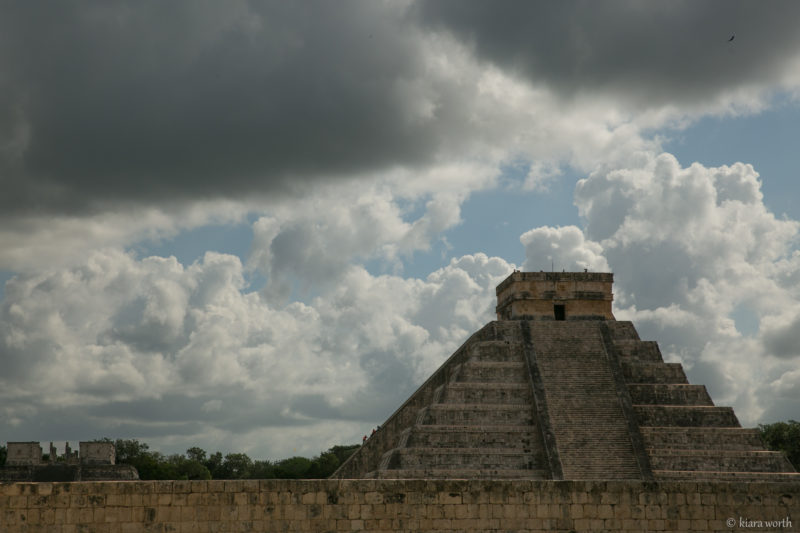
The site is impressive. The step-pyramid of El Castillo is the central attraction, flanked by the Great Ball Court featuring an entire wall of engraved skulls. The area is larger than expected and we spent hours exploring the stone columns of the Temple of the Warriors, the green waters of the Sacred Cenote, and the Observatory with its rounded dome. Market sellers lined the pathways displaying rows of endless colour and making strange jaguar noises from a small instrument. It was hard to imagine this was once a thriving city and not the movie-set of an Indiana Jones film.
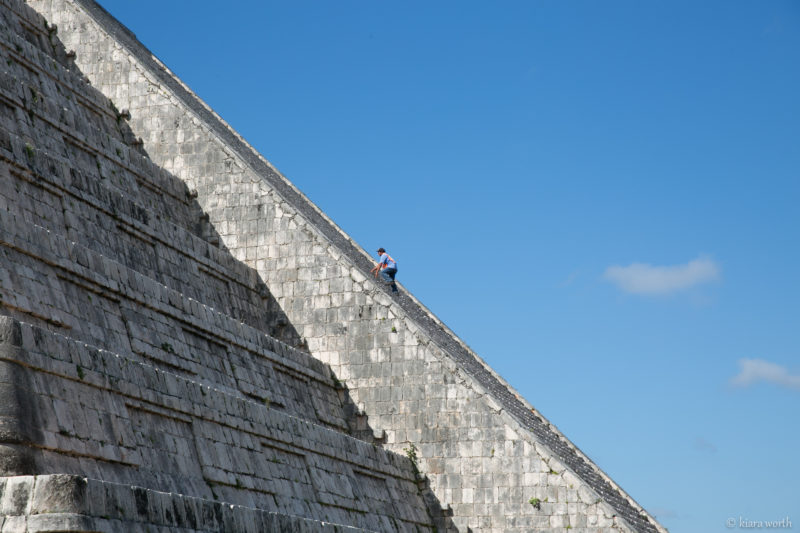
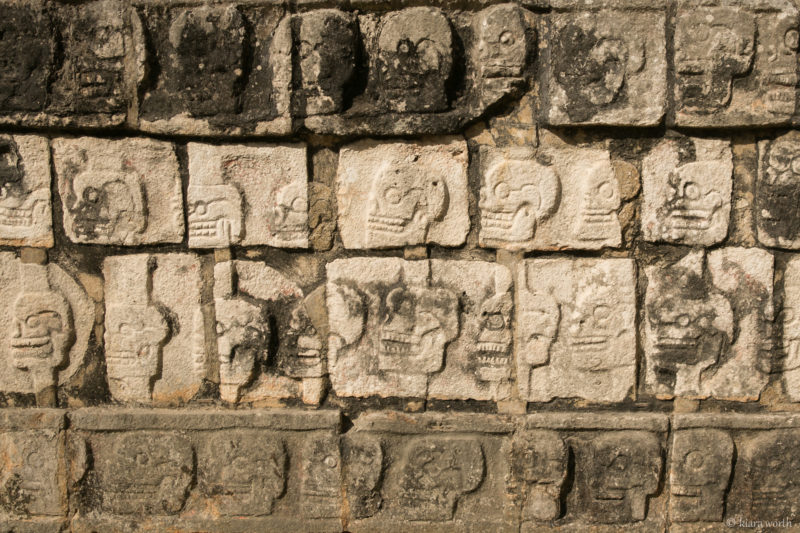

Leaving Chichén Itzá, we began to go a little more off the beaten track. We had heard of an island off the northern tip of the peninsula and we followed a series of backroads that led us to the coast.
One of the most popular things to do in the Yucatán is visit cenotes, sinkholes filled with fresh water that connect to the world’s largest underground water system. Cenotes are fascinating – most of them are connected to underwater caves and adventure travellers can abseil down the limestone walls to explore the stalagtites and stalagmites, go diving or swim in the crystal clear water. After a day of driving through the hot Mexican sun, cenotes are the perfect way to cool down before heading off on the next adventure, which is precisely what we had planned to do. We googled ‘off-the-beaten-track cenotes’ and off we went.

There are literally a thousand cenotes to choose from – we did not pick the right one.
Our first indication should have been the paper sign with ‘cenote’ and an arrow scrawled in black, precariously pinned to a wooden post and pointing down a gravel track. At the time this seemed sufficient evidence to convince us, but 20 minutes later when we found ourselves in the middle of a strange and eerie thicket, waist-high grass engulfing the car and the road, we really weren’t so sure.
There’s not much you can do in a situation like this so we just kept on driving. At one point the grass thinned and we saw a gravel road leading off the main track into the forest. Two large trees marked an entrance to somewhere but a third tree angled between them told us we were not welcome to visit. I began to fear that my Indiana Jones movie-set had suddenly changed to Breaking Bad.
Then I saw the butterfly. With wings of crystal-meth blue it floated in front of our car like a guiding symbol, each soft flutter beckoning us down the overgrown track. Follow that butterfly, I had said, it will lead us to the cenote.
It did not, of course, and instead led us to an abandoned construction site which only fueled the Mexican drug-lord theme. We debated about what to do for a few minutes – neither of us wanted to get out of the car, there was no cenote in sight, and there was absolutely no place to turn around. We were so fixated on watching the construction site for signs of life that neither of us noticed the elderly man riding up on his bike behind us. In fact, we only noticed him when he suddenly appeared at our window, like a badly-timed Mexican Jack-in-the-Box surprise, and we may have let out a little whimper at his sudden appearance.
It turns out that he was the caretaker of the cenote and we were in fact on the right road. He was as surprised to see us as we were to see him – this cenote was definitely not a popular tourist attraction and hadn’t been visited in years. We eventually made it there and spent some time walking around, but the eerie sense of abandoned locations stayed with us and we were soon back on the main road heading north.
The drive to the coast was spectacular – despite potholes and an excessive number of speed bumps, the road felt like a tunnel through the dense greenery, interspersed by small road-side hamlets with rundown houses and old men sleeping in hammocks on the porch. After a couple of hours we arrived in Chiquilá and boarded a ferry to Holbox island.
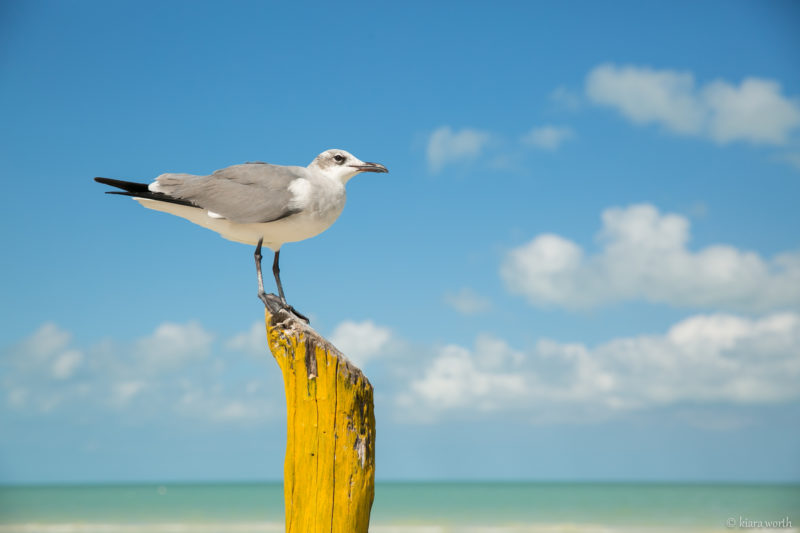
Only about 30km long and between 500m-2km wide, Holbox is the textbook definition of paradise – a white sand beach stretched out in front of us and endless shades of green and blue swirled into the Caribbean horizon. It suddenly didn’t matter that we almost didn’t find a place to stay or that there was no water at the place we did find. All that seemed important was watching the sunset and finding a good place for lobster pizza.
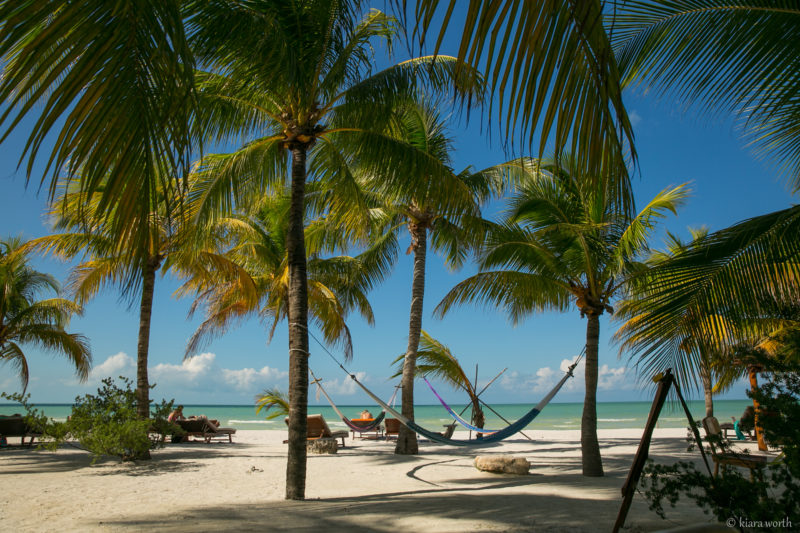
Over the next two days, Holbox did not disappoint.
The town square serves as the central hub for the island and its easy to find anything from a good cup of coffee to a banana crepe or fresh seafood platter. The entire town is just a few sandy streets and the array of coloured buildings and street art add a certain charm to the already relaxed environment. There are almost no cars and instead people travel on golf carts, puttering their way from one end of the island to the other.
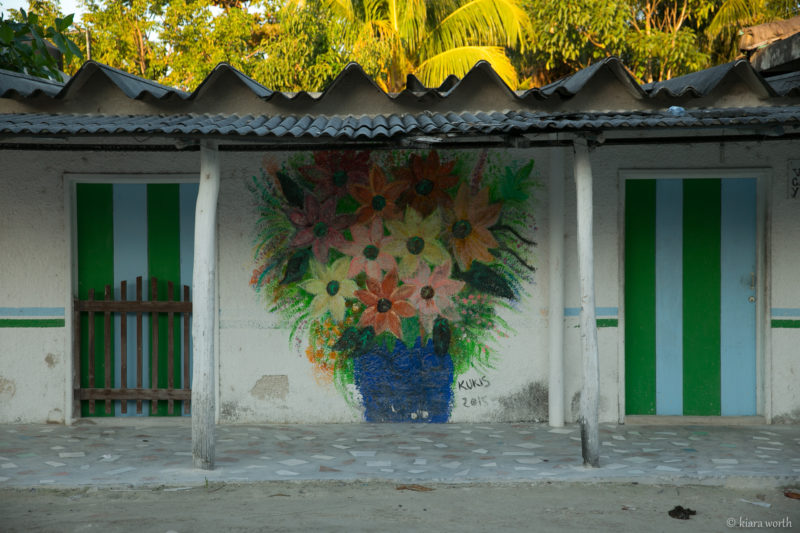
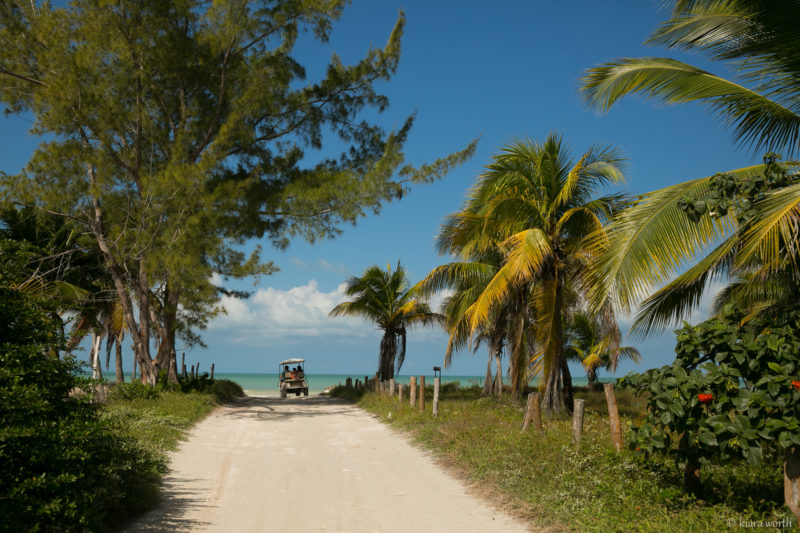
Holbox lies within the Yum Balam reserve and is home to more than 150 bird species, including pelicans, herons and flamingos. There are a number of adventure activities to explore the island but a simple day on the beach is enough. The water is surprisingly shallow, only ankle-deep about 50m out, and as we stood looking back to the shoreline, the hammocks strung between palm trees with thick greenery in the background, we were overwhelmed by the tranquility.
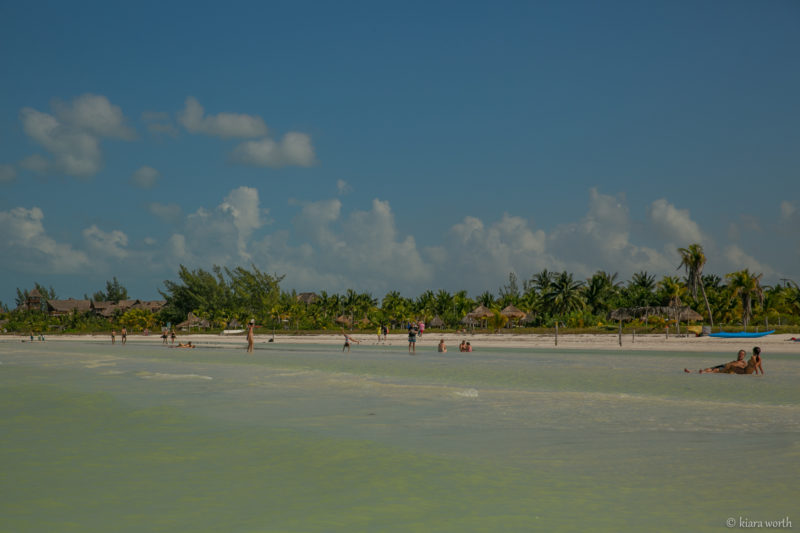
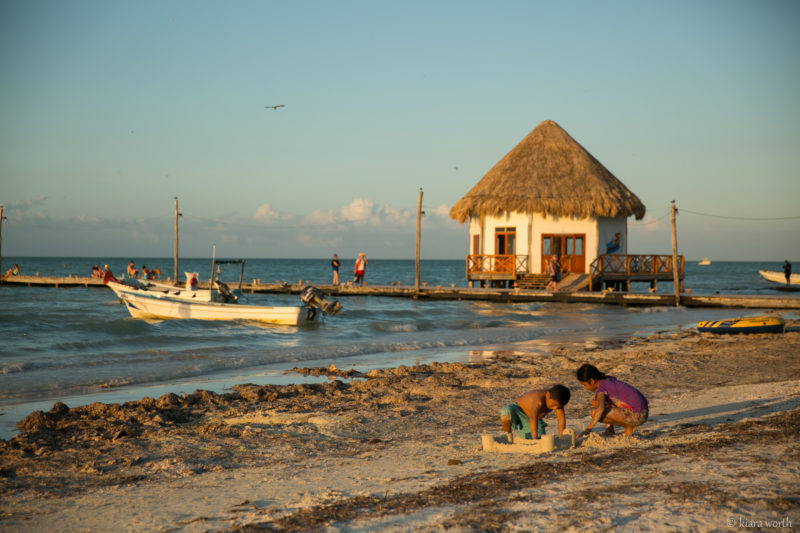
It was easy to see how time and space could escape you in a place like Holbox which is how we ended up nearly missing the last ferry back to the mainland and arriving in Kantunilkin on Christmas Eve.
We didn’t have a shining star to guide our way but just as we reached the last row of houses in town, we saw the bright light of El Dorado Guesthouse and decided to follow that instead.
[justified_image_grid ids=”3648,3649,3650,3661,3662,3652,3653,3651,3668,3660,3654,3655,3656,3664,3665,3669,3663,3666,3657,3659,3658″]



